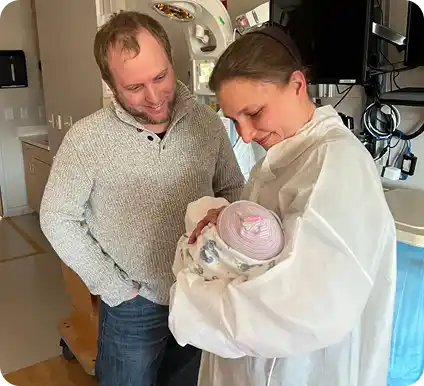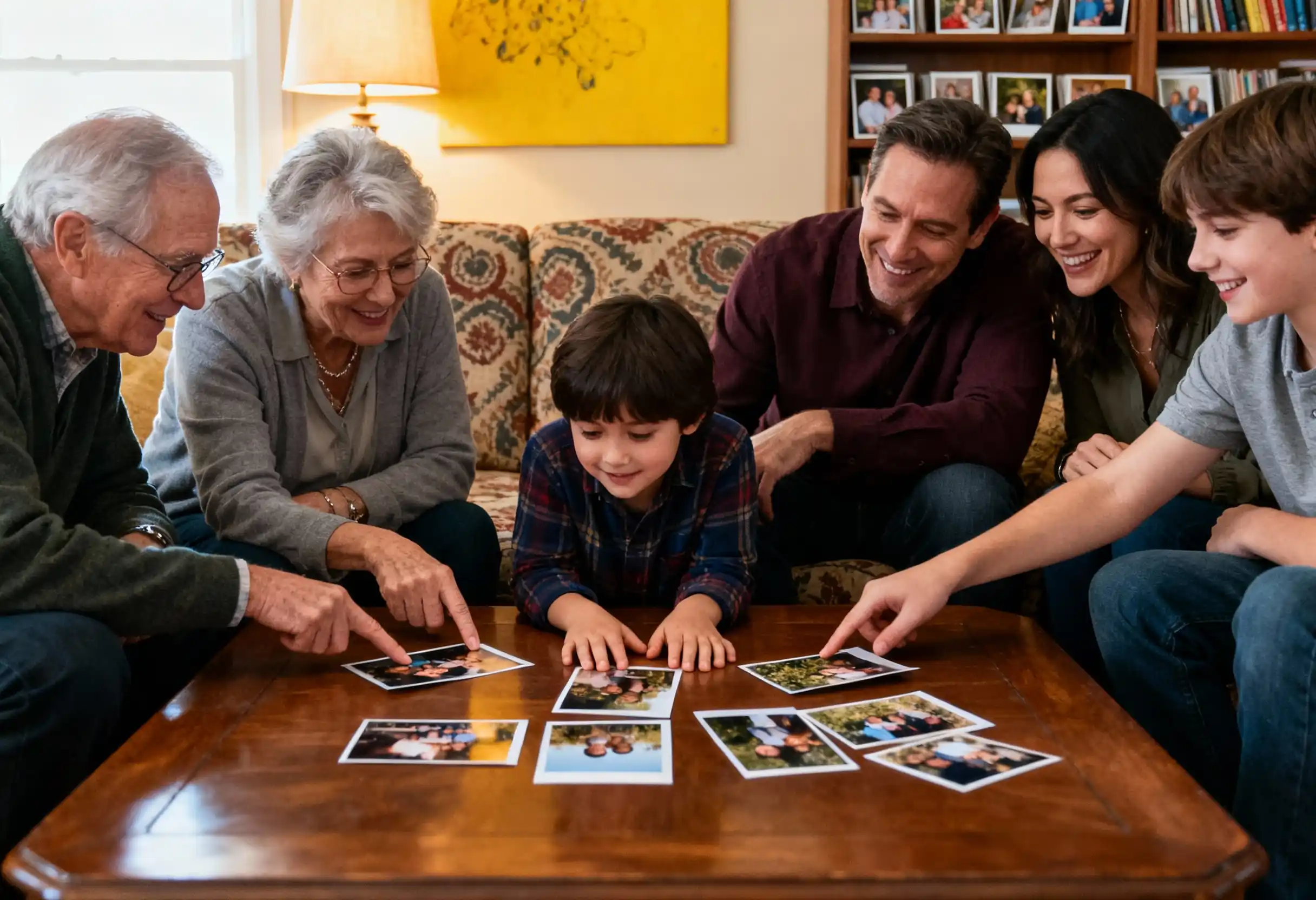Canada's Sixties Scoop Surviour on Reclaiming Indigenous Identity After Forced Adoption

Christine Miskonoodinkwe-Smith remembers the moment she got off the bus in Winnipeg and saw her biological mother for the first time since age three. Her mother burst into tears. Christine felt something she'd never experienced in her adoptive home: the immediate recognition of looking like someone, of biological connection after years of disconnection from her Cree heritage, language, and family.
Christine is a survivor of Canada's Sixties Scoop, a government policy that forcibly removed an estimated 20,000 Indigenous children from their families between the 1950s and 1980s, placing them primarily with white middle-class families. As author of the memoir "These Are The Stories," Christine uses Indigenous storytelling traditions to document her journey from trauma to healing while creating space for collective recovery among other survivors.
This episode of Voices of Adoption podcast with host Donna Pope, demonstrates both the devastating impact of forced cultural erasure and the resilience required to reclaim stolen identity while building a meaningful life despite deep loss.
When Government Policy Destroys Families
Christine and her sister, just ten months apart in age, were removed from their mother in Winnipeg when Christine was three years old. Child welfare authorities deemed their mother unfit, but Christine understands now that the removal was part of systematic Indigenous child apprehension that continued policies begun in residential schools.
Between 1951 and 1984, an estimated 20,000 or more First Nations, Métis and Inuit children were forcibly removed from their families by child welfare authorities and placed primarily with white middle-class families. The goal was explicit: assimilate Indigenous children into mainstream white society by severing connections to family, language, tradition, and community. Authorities believed that removing children from Indigenous culture would "kill the Indian in the child," forcing integration through isolation from everything that defined their identity.
Christine's adoptive family consisted of a doctor father and stay-at-home mother in Windsor, Ontario, across from Detroit. The adoption proved severely abusive, eventually failing and sending Christine back into the child welfare system where she was separated from her sister for seven years. She cycled through multiple foster homes before aging out of the system as a young adult.
The systemic nature of these removals distinguished the Sixties Scoop from voluntary adoption. Siblings were often intentionally sent to different regions to eliminate communication. Children were taken without family knowledge or consent, with no regard for extended family members who could have provided care within the community.
Racism and The Desire to Disappear
Growing up as one of only two Indigenous children in a predominantly white neighborhood, Christine experienced pervasive racism from age five. The isolation and discrimination created such internalized shame that she remembers wanting to literally paint herself white to escape her Indigenous identity.
This desire to erase herself physically manifested later as anorexia alongside major depression and generalized anxiety disorder. Christine spent years cycling in and out of psychiatric hospitalization in Windsor, sometimes staying three months at a time. Medications left her so heavily sedated that her sister had to help her walk across streets.
Indigenous fostered and adopted individuals report physical and mental health challenges including disconnection from family and culture, with research showing that cultural identity loss correlates with increased substance use and maladaptive coping mechanisms. The connection between Christine's mental health struggles and forced cultural disconnection became clear only through years of therapy and healing work.
Christine's turning point came when her sister gave birth to a daughter. Witnessing that birth awakened something in Christine about continuing cycles and breaking patterns. She decided she wanted to be present for her niece, wanted to model healing and connection rather than perpetuating pain.
Writing as Reclamation
After moving to Toronto and away from Windsor's painful associations, Christine began working on what would become her memoir. Accepted into a Banff writing residency, she started documenting snapshots of her life using non-linear Indigenous storytelling traditions that circle back to central themes rather than following Western linear narrative structures.
The memoir weaves humor through trauma, acknowledging both the horror of her experiences and the absurdity that helped her survive. She describes balancing on stairwells and calling herself an acrobat, or desperately wanting off planes during trips to Winnipeg. These moments of levity prevent the story from becoming overwhelmingly dark while honoring the full complexity of survival.
Christine had to put the manuscript away multiple times when the emotional weight became too heavy. Writing her story required confronting memories of abuse, abandonment, separation from her sister, and the years she spent believing herself unwanted and unworthy. But eventually, the act of writing became her primary healing tool.
Through documenting her experience, Christine creates space for other Sixties Scoop survivors to recognize themselves and feel less alone. Her work contributes to growing body of Indigenous literature that centers Native voices and experiences rather than allowing others to tell Indigenous stories through colonial lenses.
Finding Mother After Years of Searching
While still in college, Christine asked Children's Aid to help her register on the adoption registry. Just one week after she registered, her biological mother registered as well. Their first meeting at the Winnipeg bus station provided Christine with the biological connection she'd craved her entire life.
Her mother, a residential school survivor herself, struggled with mental health issues that had contributed to the original removal. Christine acknowledges that returning to her mother's care might not have provided the stability she needed. This honest assessment doesn't justify the Sixties Scoop's broader harm, but recognizes that individual circumstances contain complexity even within systemically unjust policies.
Christine treasured the years she had with her mother before her death eight years ago. Their relationship allowed Christine to learn about her heritage, hear stories about her family, and build connection to the culture that had been stolen from her. Though her mother couldn't provide everything Christine had missed, she remained Christine's mother, and that bond carried deep meaning.
The reunion revealed the multi-generational trauma created by Canadian government policies. Christine's mother survived residential schools only to have all four of her children removed through the Sixties Scoop. The compounding losses contributed to her struggles while simultaneously demonstrating the intentional destruction of Indigenous families across generations.
Guidance for Adoptive Families and Policymakers
Christine offers clear recommendations for adoptive families raising Indigenous children. These families must actively facilitate cultural connection rather than expecting assimilation. This includes taking children to powwows, supporting language learning, connecting with Indigenous communities, and keeping minds open to traditions that may differ from mainstream culture.
In 2021, Indigenous children accounted for 7.7 percent of all children under age 15 in Canada but represented 53.8 percent of children in foster care, making them 14 times more likely than non-Indigenous children to be in care. This continuing disparity demonstrates that the pattern begun in the Sixties Scoop persists today in what some call the "millennium scoop."
Research shows that parental support of cultural socialization is positively associated with psychological adjustment and self-esteem in transracial adoptees, emphasizing that maintaining Indigenous identity strengthens rather than threatens adoptive family bonds. Indigenous children need allies who honor their heritage rather than erasing it. Adoptive families should recognize that cultural connection isn't optional or extra, it's essential to the child's wholeness and wellbeing.
For government policymakers, Christine emphasizes that words mean nothing without action. Canada officially apologized for the Sixties Scoop, but continues fighting Indigenous communities in court over ongoing child welfare disparities. Real change requires listening to Indigenous voices, providing resources that support families staying together, and recognizing Indigenous peoples' right to self-determination including child-rearing practices.
Message to Other Survivors
Christine's primary message to other Sixties Scoop survivors focuses on connection and collective healing. She emphasizes that survivors are not alone, that thousands share similar experiences of forced removal, cultural erasure, and the long journey back to reclaiming Indigenous identity.
Healing happens through community, through sharing stories, through learning from each other. Christine encourages survivors to connect with each other, to participate in Indigenous cultural events, and to engage in whatever activities help process trauma. For her, writing provided the pathway. For others, it might be art, traditional practices, ceremony, or therapy.
The freedom of choice that was stolen from Indigenous families during the Sixties Scoop must be reclaimed by survivors deciding their own healing paths. Whether that means living on reserve or in urban areas, actively learning language or connecting in other ways, each survivor deserves agency over their identity and recovery.
Christine models what reclamation looks like: acknowledging pain while refusing to be defined solely by trauma, honoring Indigenous heritage while living authentically in present circumstances, and using her voice to create space for others still finding theirs.
Building Understanding and Accountability
Christine Miskonoodinkwe-Smith's journey from forcibly removed child to published author demonstrates both the devastating impact of cultural genocide policies and the resilience of Indigenous peoples. Her story calls for accountability from governments that implemented these policies while offering hope for survivors seeking healing and connection.
For adoptive families of Indigenous children today, Christine's experience provides clear guidance: honor children's heritage through active cultural engagement, listen to Indigenous voices about what children need, and recognize that maintaining Indigenous identity strengthens rather than threatens family bonds.
Her memoir "These Are The Stories" stands as testament to survival, reclamation, and the power of storytelling to create collective healing. By documenting her experience with unflinching honesty and carefully placed humor, Christine ensures that Sixties Scoop stories are told by those who lived them rather than those who perpetrated the policies.
Ready to explore more stories about identity, healing, and cultural heritage in adoption? Subscribe to Voices of Adoption for conversations that honor complexity while building understanding across diverse adoption experiences.









